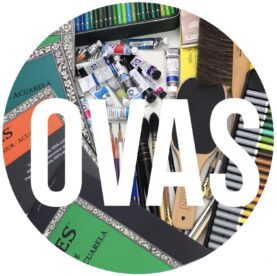TULIP
Click to watch a video how to get access to the workshop content

In this video tutorial you will learn how to paint the beautifully blooming tulip and create the illusion of the “flying” petals. The painting process will cover the Ala Prima techniques, infusion washes, working with masking liquid.
The painting process divided in over dozen short episodes covering each part of the flower. This structure provides you a stress free and easy pattern to follow.
This video tutorial suites to all ages and all skills levels. Although some previous experience in watercolour would be a benefit.
BASIC package for self study Lifetime access to 180 minutes detailed video tutorial
Course Content
Student’s work
Student’s work gallery is coming soon
Check out all FLOWERS
-
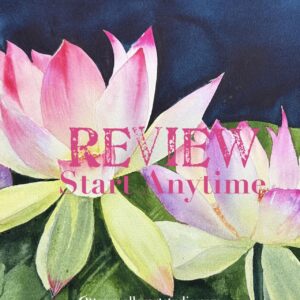 Lotus. Watercolour tutorial. REVIEW
Lotus. Watercolour tutorial. REVIEW -
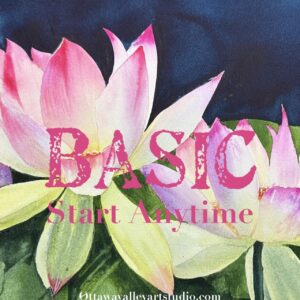 Lotus. Watercolour tutorial. BASIC.
Lotus. Watercolour tutorial. BASIC. -
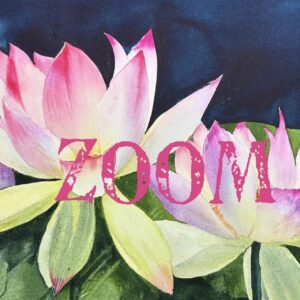 Lotus. ZOOM. Watercolour workshop. April 7, 2025
Lotus. ZOOM. Watercolour workshop. April 7, 2025 -
 Spring Flowers. Watercolour tutorial. REVIEW
Spring Flowers. Watercolour tutorial. REVIEW -
 Spring Flowers. Watercolour tutorial. ONEDAY
Spring Flowers. Watercolour tutorial. ONEDAY -
 Spring Tulips. Watercolour tutorial. BASIC.
Spring Tulips. Watercolour tutorial. BASIC. -
 Oriental Poppies. Watercolour tutorial. ONEDAY
Oriental Poppies. Watercolour tutorial. ONEDAY -
 Oriental Poppies. Watercolour tutorial. REVIEW
Oriental Poppies. Watercolour tutorial. REVIEW -
 Oriental Poppies. Watercolour tutorial. BASIC.
Oriental Poppies. Watercolour tutorial. BASIC. -
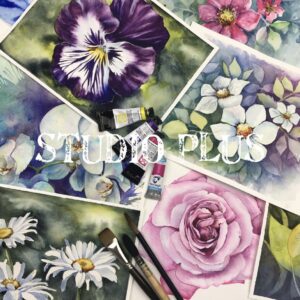 My Flowers. Watercolour course. STUDIO PLUS INTERMEDIATE. November 12, 2024
My Flowers. Watercolour course. STUDIO PLUS INTERMEDIATE. November 12, 2024 -
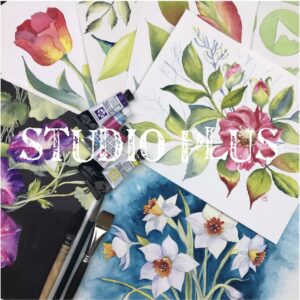 My Flowers. Watercolour course. STUDIO PLUS BEGINNERS. October 1, 2024
My Flowers. Watercolour course. STUDIO PLUS BEGINNERS. October 1, 2024 -
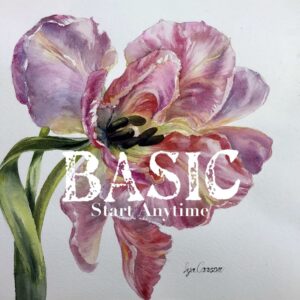 Tulip. Watercolour tutorial. BASIC.
Tulip. Watercolour tutorial. BASIC. -
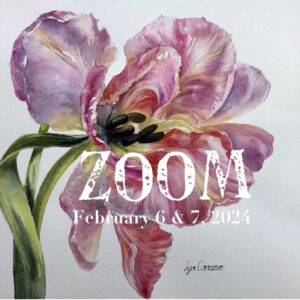 Tulip. ZOOM. Watercolour workshop. February 6 & 7, 2024 @ 7 PM
Tulip. ZOOM. Watercolour workshop. February 6 & 7, 2024 @ 7 PM -
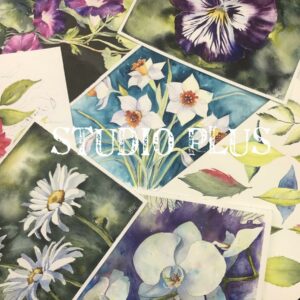 My Flowers. Watercolour course. STUDIO PLUS BEGINNERS AND INTERMEDIATE. March 20, 2024
My Flowers. Watercolour course. STUDIO PLUS BEGINNERS AND INTERMEDIATE. March 20, 2024 -
 My Flowers. Watercolour course. STUDIO PLUS INTERMEDIATE LEVEL. April 30,2024
My Flowers. Watercolour course. STUDIO PLUS INTERMEDIATE LEVEL. April 30,2024 -
 My Flowers. Watercolour course. STUDIO PLUS BEGINNERS. March 20, 2024
My Flowers. Watercolour course. STUDIO PLUS BEGINNERS. March 20, 2024 -
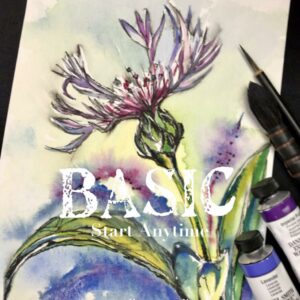 Cornflower. Watercolour workshop. BASIC
Cornflower. Watercolour workshop. BASIC -
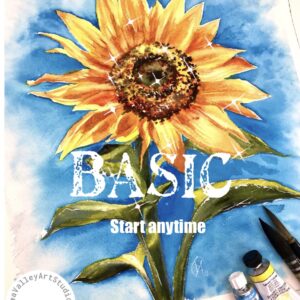 Sunflower. Watercolour workshop. BASIC.
Sunflower. Watercolour workshop. BASIC. -
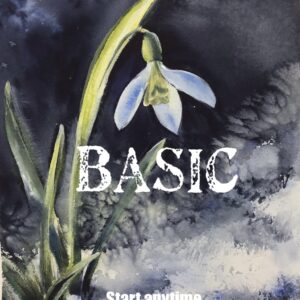 Snowdrops. Watercolour workshop. All skill levels. BASIC. Start anytime.
Snowdrops. Watercolour workshop. All skill levels. BASIC. Start anytime. -
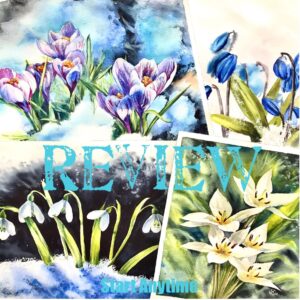 Just Bloom. Watercolour mini course. All skill levels. REVIEW. Start anytime.
Just Bloom. Watercolour mini course. All skill levels. REVIEW. Start anytime. -
 Just Bloom. Watercolour mini course. All skill levels. BASIC. Start anytime.
Just Bloom. Watercolour mini course. All skill levels. BASIC. Start anytime. -
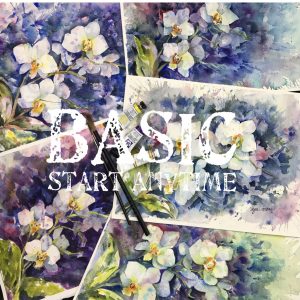 Orchid in the Rain. Watercolour workshop. All skill levels. BASIC. Start anytime.
Orchid in the Rain. Watercolour workshop. All skill levels. BASIC. Start anytime. -
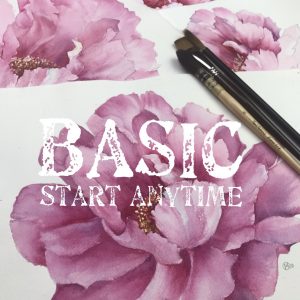 The Peony. Watercolour workshop. Intermediate. BASIC. Start anytime.
The Peony. Watercolour workshop. Intermediate. BASIC. Start anytime. -
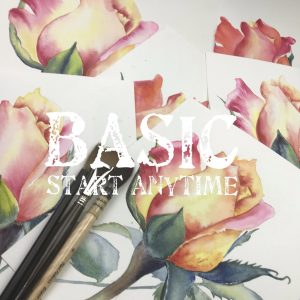 Double Delight. Watercolour workshop. Beginners to Intermediate. BASIC. Start anytime.
Double Delight. Watercolour workshop. Beginners to Intermediate. BASIC. Start anytime. -
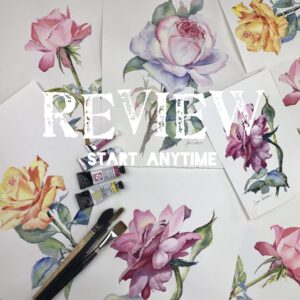 The Rose. Watercolour course. Intermediate. REVIEW. Start anytime.
The Rose. Watercolour course. Intermediate. REVIEW. Start anytime. -
 The Rose. Watercolour course. Intermediate. BASIC. Start anytime.
The Rose. Watercolour course. Intermediate. BASIC. Start anytime. -
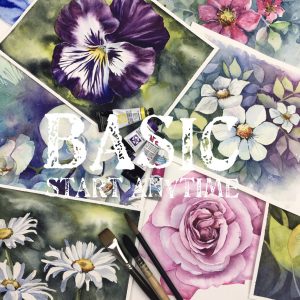 Flowers. Watercolour course. Intermediate. BASIC. Start anytime.
Flowers. Watercolour course. Intermediate. BASIC. Start anytime. -
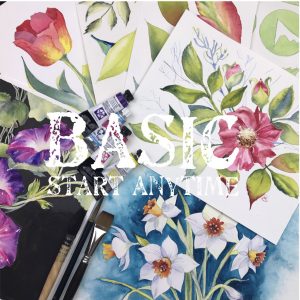 Flowers. Watercolour course. Beginners. BASIC. Start anytime.
Flowers. Watercolour course. Beginners. BASIC. Start anytime. -
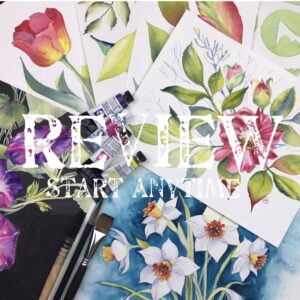 Flowers. Watercolour course. Beginners. REVIEW. Start anytime.
Flowers. Watercolour course. Beginners. REVIEW. Start anytime. -
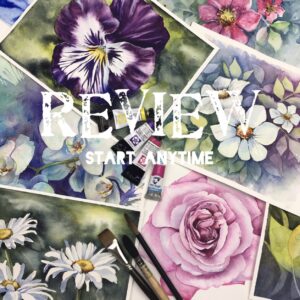 Flowers. Watercolour course. Intermediate. REVIEW. Start anytime.
Flowers. Watercolour course. Intermediate. REVIEW. Start anytime.
Free tutorials
How to get access to the tutorial content
Materials that I am going to use during demonstration;
This list is only for your information, there is no need to get exactly what I am using:
Watercolour paper
- Arches watercolour paper, cotton, cold press or rough, 300 gm2
Watercolour brushes;
- Round # 10-12 Paul Rubens
- Flat synthetic brush 3/4 and 1 1/2 or larger (Escoda, Grumbacher)
Watercolour paint;
Light yellow (Lemon yellow, Daniel Smith)
Orange (Orange Transparente, Schminske)
Pink (Quinacridone Rose, Daniel Smith)
Dark pink (Rose Madder, Daniel Smith)
Red (Quinacridone Red, Daniel Smith)
Bright red ( Carmine, Daniel Smith)
Magenta (Magenta, Daniel Smith)
Violet (Mineral Violet, Daniel Smith)
Dark violet (Shadow Violet, Daniel Smith)
Light green (Gold Green, Daniel Smith)
Dark green (Undersea green, Daniel Smith)
Rusty Brown (Burnt Sienna, Daniel Smith)
Darn Brown (Burnt Sienna, Daniel Smith)
Ultramarine (Ultrmarine, Daniel Smith)
Black Blue (Indigo, Daniel Smith)
Dark Grey (Paynes Grey, Daniel Smith)
Neutral Grey (Neutral Tint, Daniel Smith) Optional
White Gouache (optional)
And/or
Masking liquid (a few drops of liquid soap and a small cheap brush for applying it to the paper)
Watercolour board (any sturdy cardboard that you can tape the paper to)
Drafting (artistic) tape
Watercolour palette with a large surface for mixing pigments. Alternatively, you can use a white ceramic plate.
Two large jars for water;
Paper towels;
Hair dryer
